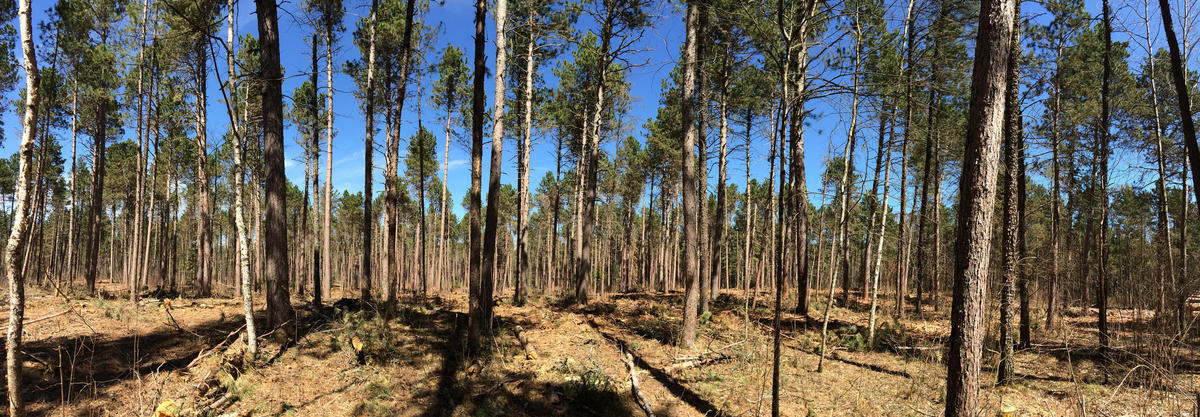Silviculture Objective(s)
To test silvicultural systems that demonstrate adaptive approaches for anticipated changes in climate and disturbance regime. The adaptive approaches are categorized as Resistance, Resilience, and Transition treatments, and a Control.
Resistance- To maintain a red pine-dominated forest community with vigorous overstory trees able to withstand future climate extremes, especially drought, and forest health issues
Resilience- To create and maintain a compositionally and structurally complex multi-cohort pine forest that contains a significant component of native future-adapted species currently present on site.
Transition- To create and maintain a compositionally and structurally complex forest composed primarily of future-adapted species that are currently present, as well as those projected to have suitable future habitat on the Chippewa National Forest over the next 100 years.
No Action- No harvest or other treatments. Allow natural processes such as forest succession to occur without management. These stands serve as a reference condition to the other harvested treatments.
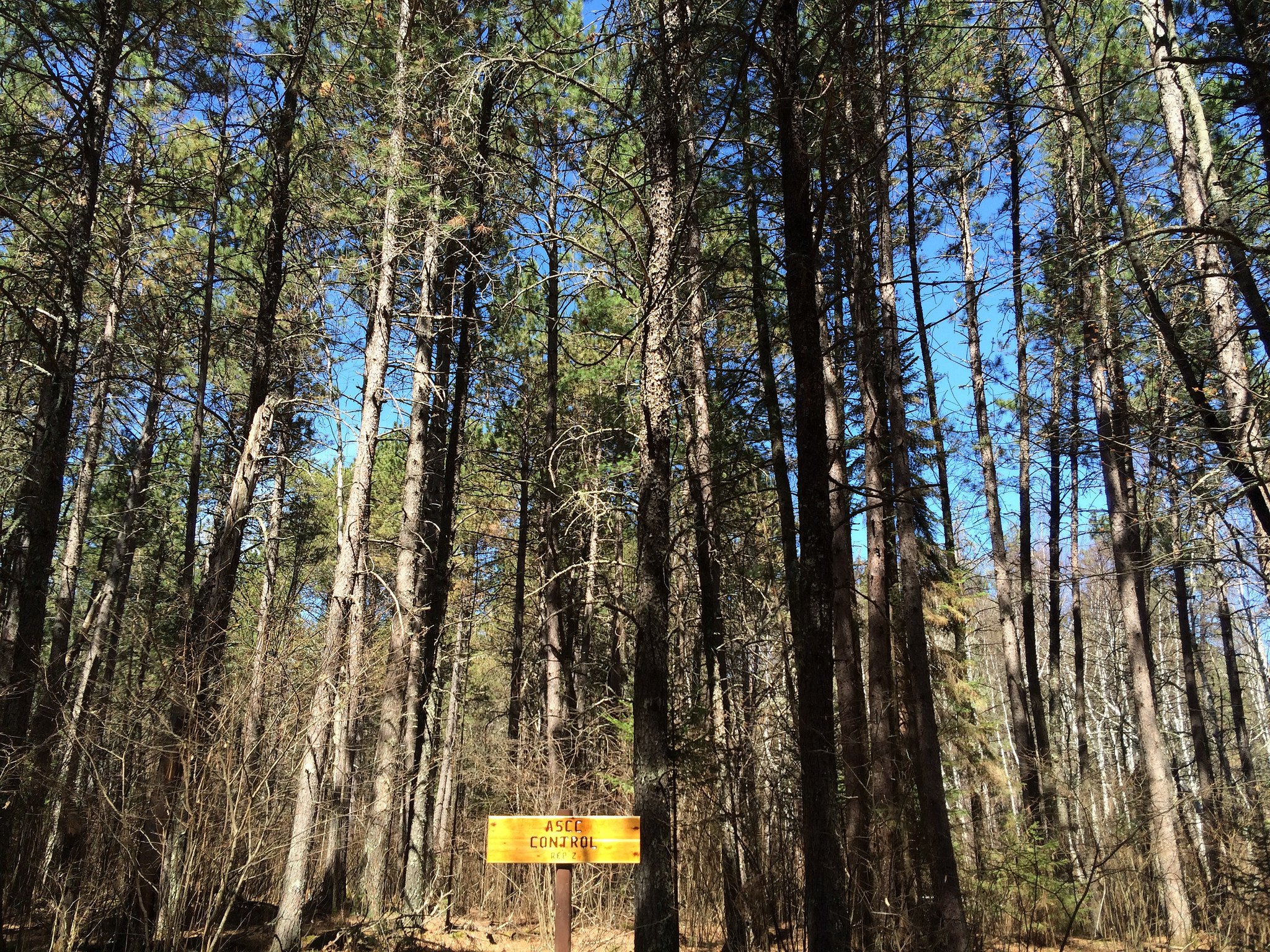
Figure 1: ASCC control, April 2015
Pre-treatment stand description and condition
Pre-treatment species composition:
These stands are dominated by red pine and jack pine in the overstory. Scattered overstory components include eastern white pine, paper birch, balsam fir, quaking aspen, and white spruce. Understory trees are sparse, but northern red oak, paper birch and white spruce seedlings and saplings are scattered throughout. Shrub layer is of moderate to heavy density throughout the stands and is dominated by hazel.
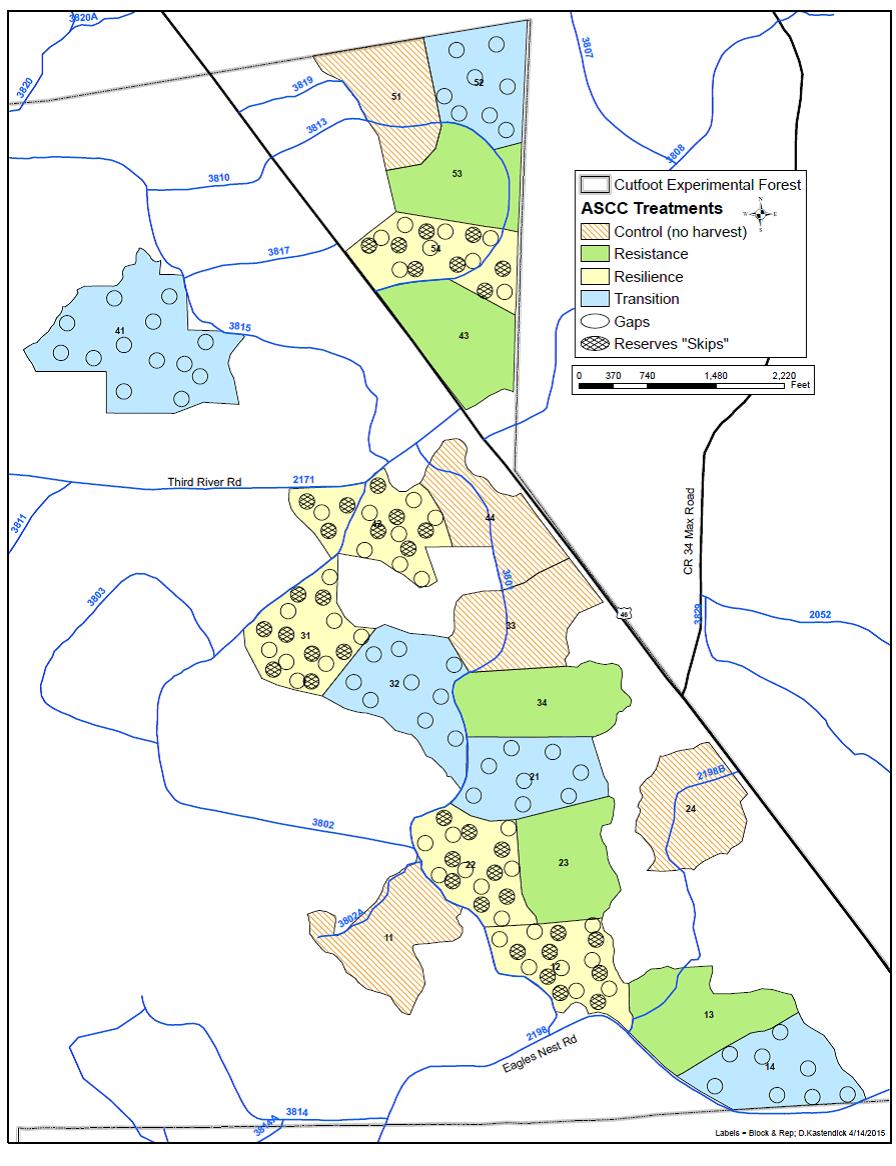
Figure 2: Map of ASCC treatment area.
Silviculture Prescription
Resistance treatment: An intermediate treatment similar to current standard thinning practices. This includes thinning to achieve a stand-level average of 100-120 ft2/ac residual basal area for all species. Maintain red pine to represent 90% of total stocking, keeping each minor species to approximately 1% and total minor species to less than 10% cumulatively. This will provide improved growing conditions for most residual trees, increase their health and vigor, reduce near term mortality and maintain species and structural diversity for wildlife objectives. Additionally, this treatment will establish access routes for future entries. A Second thinning may follow by 10 years after the first, reducing basal area to the low end of full stocking; 80 ft2/ac.
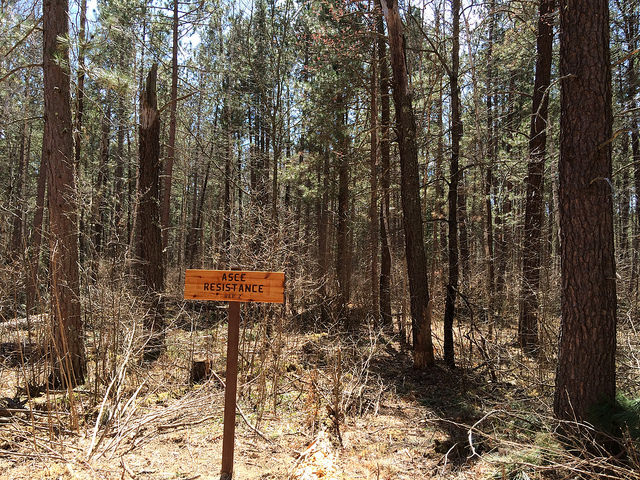
Figure 3: ASCC resistance sign, April 2015
Resilience treatment: A variable density thinning to create structurally and compositionally complex stands. The thinning will follow a skips and gaps approach that includes ½-acre gaps/groups cuts, ½-acre skips/reserves, and a thinned matrix, achieving a stand average 100-120 ft2/ac basal area. The skips will be delineated as no-cut patches that retain conditions similar to the No Action treatment. The thinned matrix will create conditions similar to the Resistance treatment. Gaps will provide growing conditions for a new cohort of naturally and artificially-regenerated trees. Artificial regeneration will focus on currently native species that are projected to be future climate-adapted. This initial harvest and planting will increase heterogeneity and complexity of stand structure and composition while providing variable canopy cover, density of residual trees, and understory plant community development; facilitate pockets of regeneration of desired species; improve resilience to drought events; and protect unique features of the stand’s structure (i.e., pockets of regeneration, unique landforms, etc.).
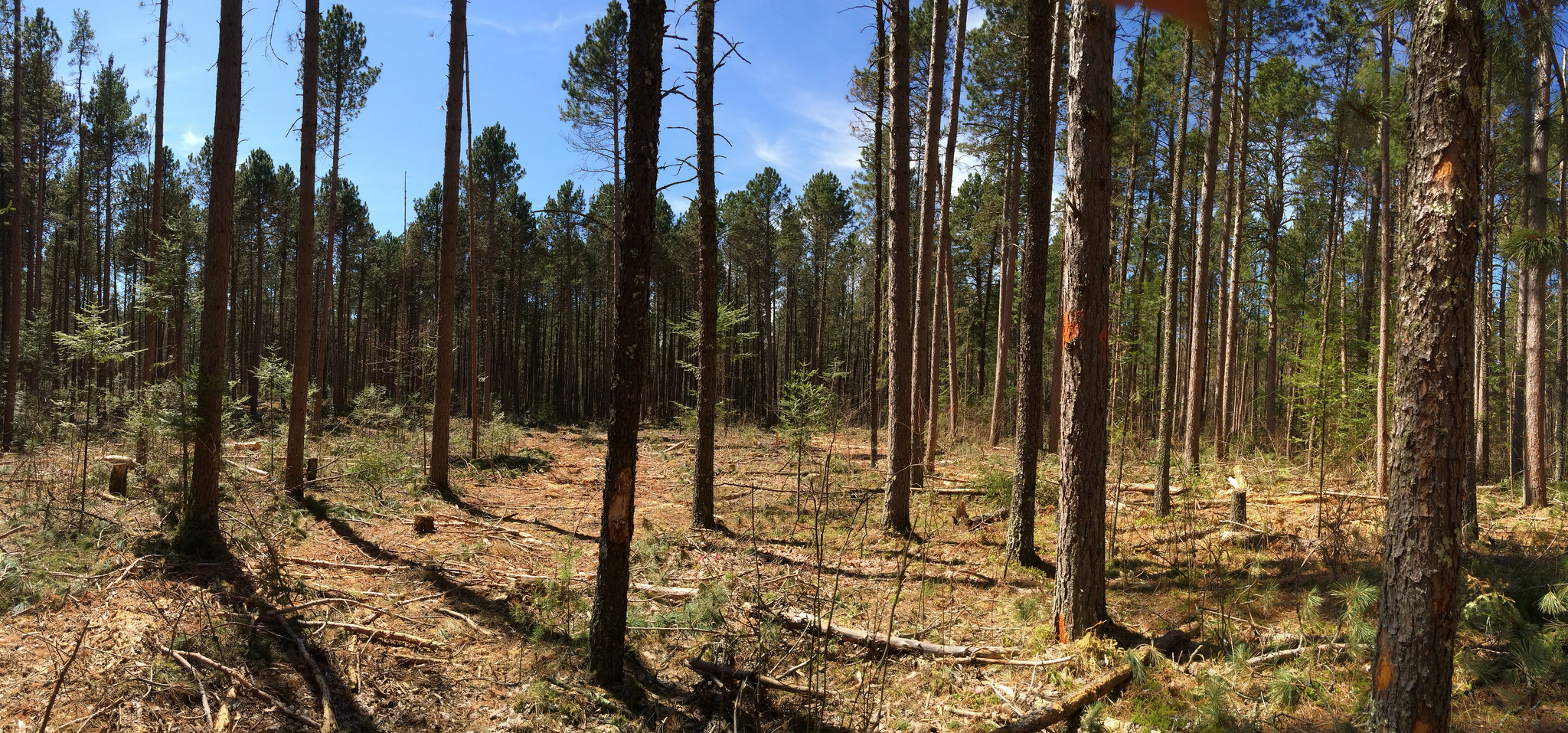
Figure 4: ASCC resilience panoramic, April 2015
Transition treatment: A expanding gap irregular shelterwood approach for creating a multi-aged forest and transitioning from current composition and structural conditions to future adapted conditions. The treatment includes heavy thinning of the matrix to 70 ft2/ac basal area, along with 8-10 ½-acre gaps/group cuts (0.15-0.20 per ac), for a stand average basal area of 60-70 ft2/ac. The thinning level in the matrix is higher than in the Resilience and Resistance treatment and serves as an establishment cutting for future climate-adapted species that are mid-tolerant to shade tolerant. The gaps will provide growing conditions to establish future climate-adapted species that are shade intolerant. This harvest will increase stand heterogeneity and complexity and provide similar ecosystem composition, structure, goods and services as the Resilience treatment in the short term. Future entries will progressively expand gaps into the matrix areas to release established regeneration.
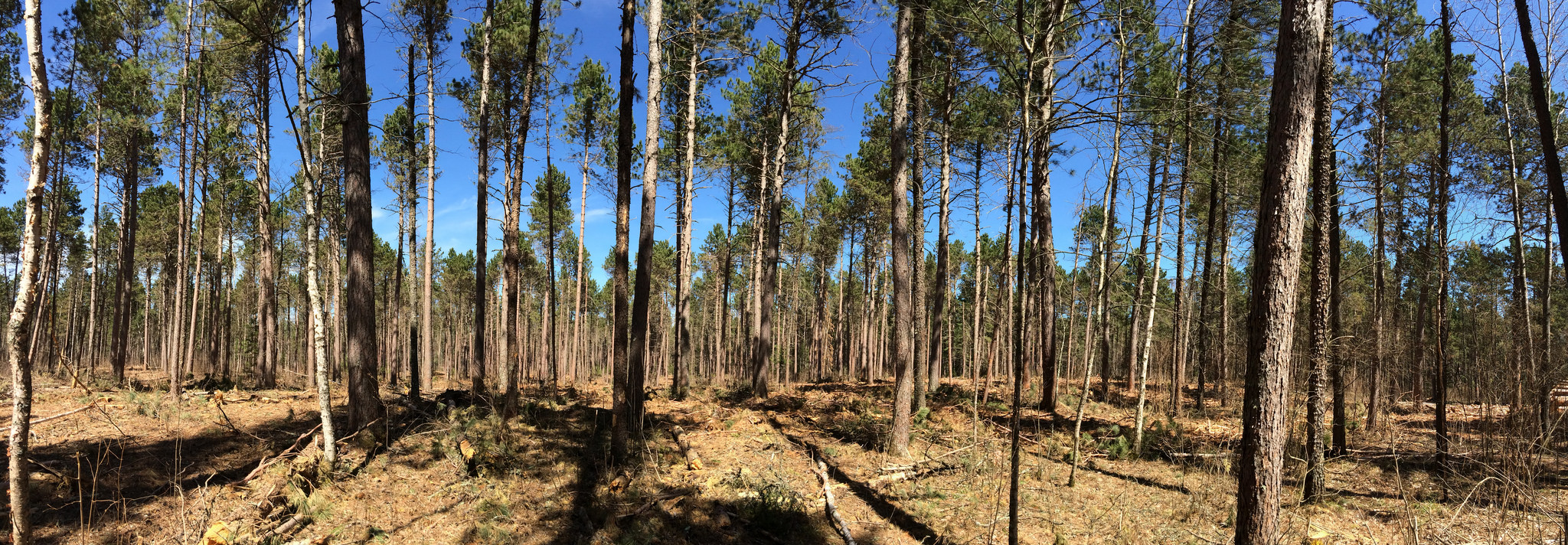
Figure 5: ASCC transition panoramic, April 2015
No Action: No harvest or other treatments. Allow natural processes such as forest succession to occur without management. These stands serve as a reference condition to the other harvested treatments.
What actually happened during the treatment
Summer 2014: Timber was appraised and treatments were laid out by Josh Kragthorpe and Doug Kastendick from the USFS Northern Research Station and the stumpage was sold to Rieger Logging, Inc. In addition, permanent plots were installed and measurement of tree regeneration, ground layer plant species, sub-canopy and overstory trees was completed.
Fall 2014/Winter 2015: The stands were harvested by Rieger Logging, Northome MN with cut-to-length processors, forwarders, whole tree harvesters, and grapple skidders. Logging began in early November and ended in March. Frozen ground conditions were present throughout, but snow cover was lacking in November.
Winter/Spring 2015: Residual overstory trees were remeasured and tagged for future remeasurement in permanent plots.
Spring/Summer 2015: Site improvement and soil scarification using a harrow disc will occur to lower stump and slash heights, and to cut non designated 2-5 inch saplings species in canopy gaps within the Resilience treatment (20 ac total) and the entire Transition treatments (170 ac total). The disking treatment will be applied during the latter half of the growing season of 2015, unless scarification is adequate from harvest operations. Remeasurement of regeneration, understory plant species, and ground layer vegetation will occur in late summer 2015.
Spring 2016: Planting is planned for the canopy gaps of the Resilience treatment and throughout the Transition treatment. Species to be planted include:
Resilience Treatment
eastern white pine
jack pine
northern red oak
bur oak
red maple
Planting will occur in the gaps only in equal proportions among species. There are 4 ac of gaps in each treatment stand * 5 blocks for a total of 20 acres of gaps to plant at ~1600 TPA or 320 seedlings per species per acre. A total of 6400 seedlings per species will be needed for the resilience treatment.
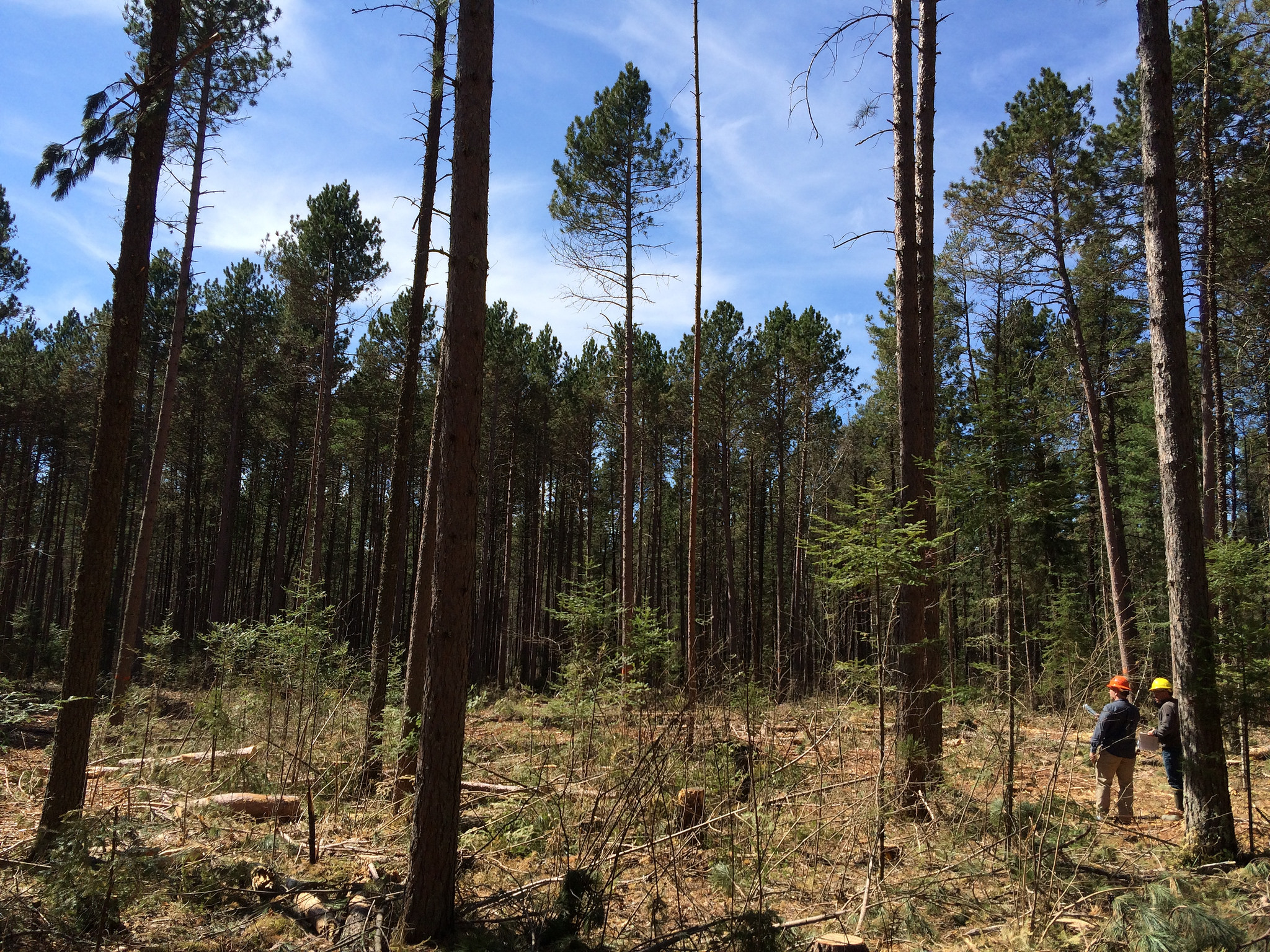
Figure 6: ASCC resilience, April 2015
Transition Treatment
eastern white pine
northern red oak
bur oak
white oak (next southern climate zone)
red maple
bitternut hickory (next southern climate zone)
ponderosa pine (Pine Ridge, NE, Rosebud, SD, Custer NF, MT)
black cherry (next southern climate zone)
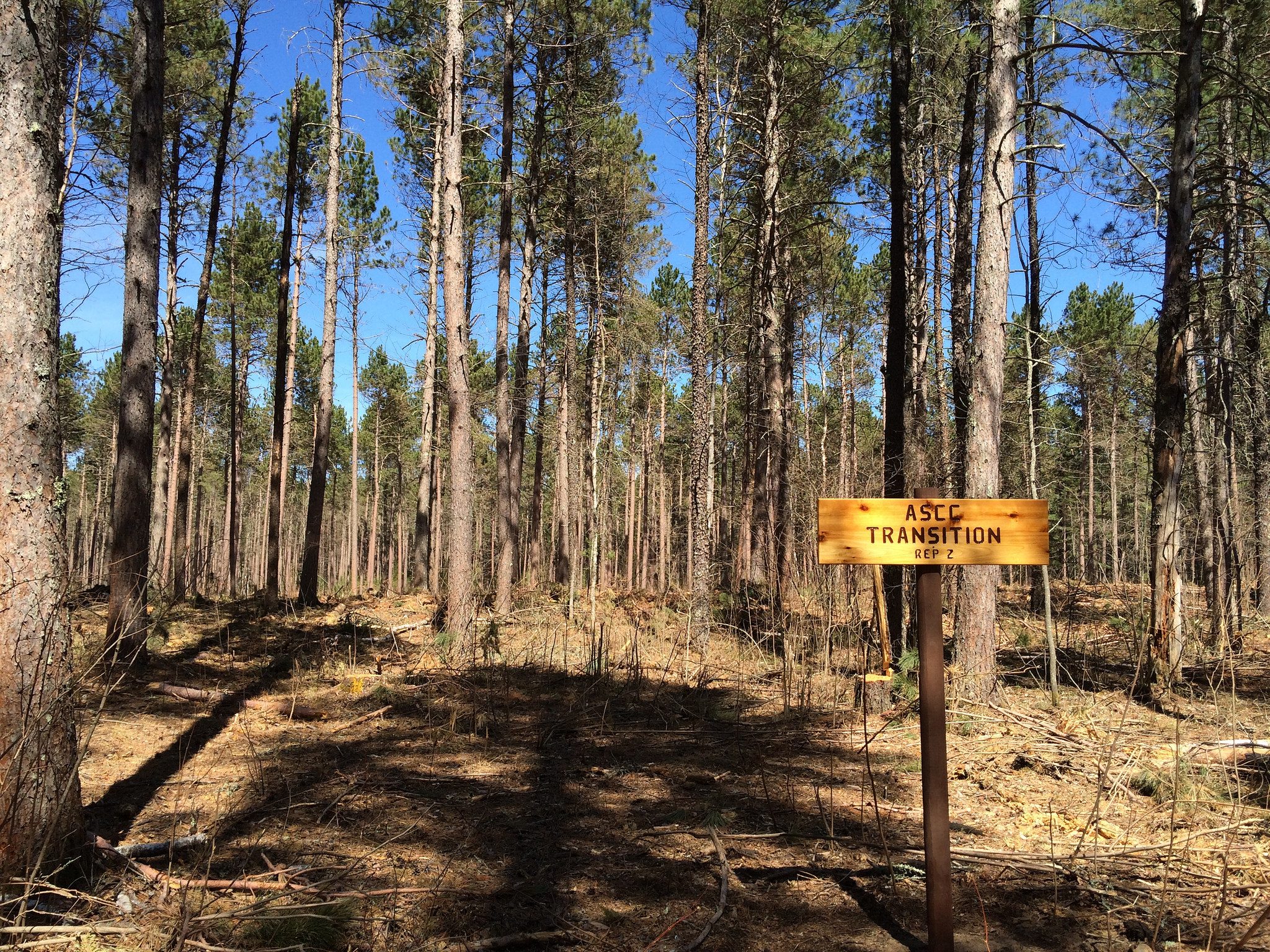
Figure 7: ASCC transition, April 2015
Planting will occur across the entire treatment for all species, including both gaps and matrix in equal proportions. A total of 170 acres will be planted at ~1600 TPA, or 200 trees per species per acre. A total 34,000 seedlings per species will be needed for transition treatment.
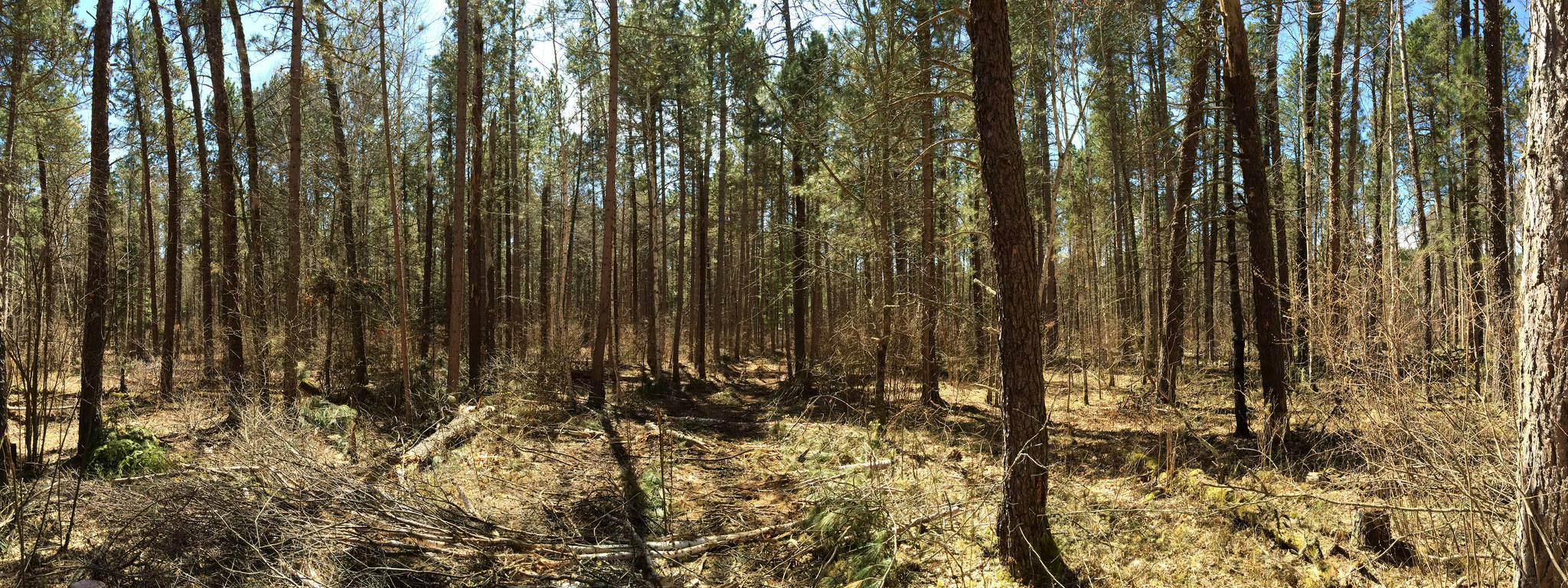
Figure 8: ASCC resistance, April 2015
Post-treatment assessment
We will assess growth and survival over time, but with different expectations depending on treatment. In the short-term, we expect red pine to remain healthy and productive in all treatments, particularly at reduced stocking levels. Over-time, we expect red pine health and productivity to decline with a warming climate and concurrently, the health and productivity of new climate-adapted species to be sustained or improve. To reach regeneration stocking levels in planted areas at year 5, all pine collectively planted and natural (plus residuals) must reach 400 TPA.
Plans for future treatments
Resistance treatment: Tentatively, repeat the thinning treatment in 10-15 years and harvest to the Red Pine Stocking Chart B-line (Benzie 1977), the lower limit of full stocking (80 ft2/ac).
Resilience treatments: Release from competing vegetation and browse protection (preferably, bud-capping) of natural and planted stock in canopy gaps (20 ac) in 2016-2020. Tentatively re-enter in 10-15 years to cut new gaps in the matrix area with a goal of increasing stand heterogeneity and complexity.
Transition treatments: Expand existing gaps after 10-15 years or longer as needed. Release and browse protection (preferably, bud-capping) of natural and planted stock from competing species and animals across entire treatment (170 ac) in 2016-2020. Reduce stocking to below the B-line of the stocking chart.
Costs and economic considerations
Time estimate to lay out / plan-6 months, time to harvest-4 months, timber sale revenue $848,000, site prep $80,000 (160 acres)
Summary / lessons learned / additional thoughts
Based on the responses from the logger and the FS sale administrator marking each treatment boundary and the ½ ac. skips with different colors would have created less confusion in determining locations within the study.
Project leads are Brian Palik, USFS Northern Research Station, Grand Rapids, MN; Linda Nagel, Department of Forest and Rangeland Stewardship, Colorado State University ([email protected]); and Tony D’Amato, Rubenstein School of Environment and Natural Resources, University of Vermont.
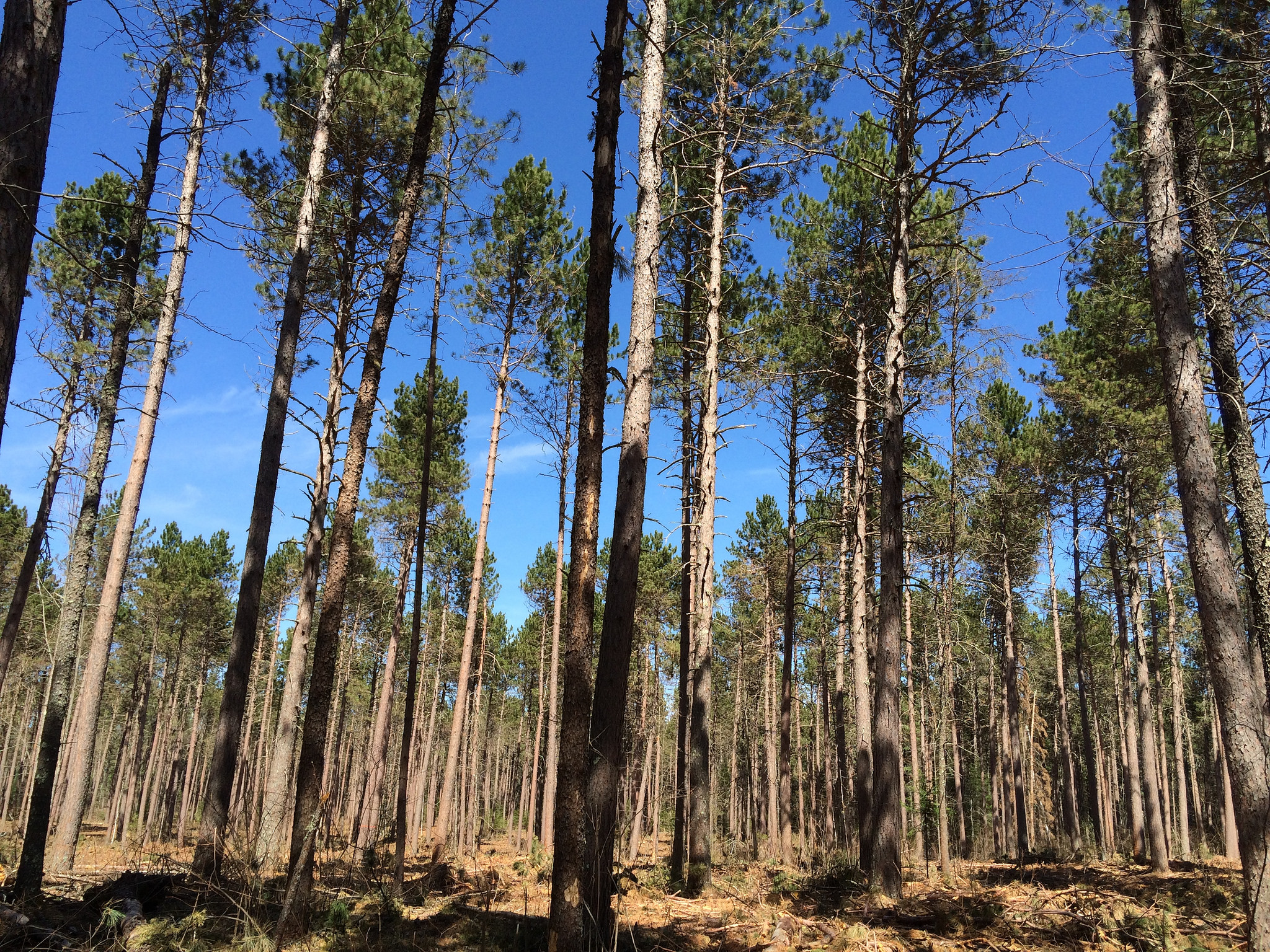
Figure 9: ASCC transition, April 2015
